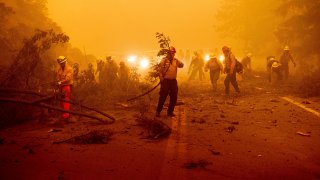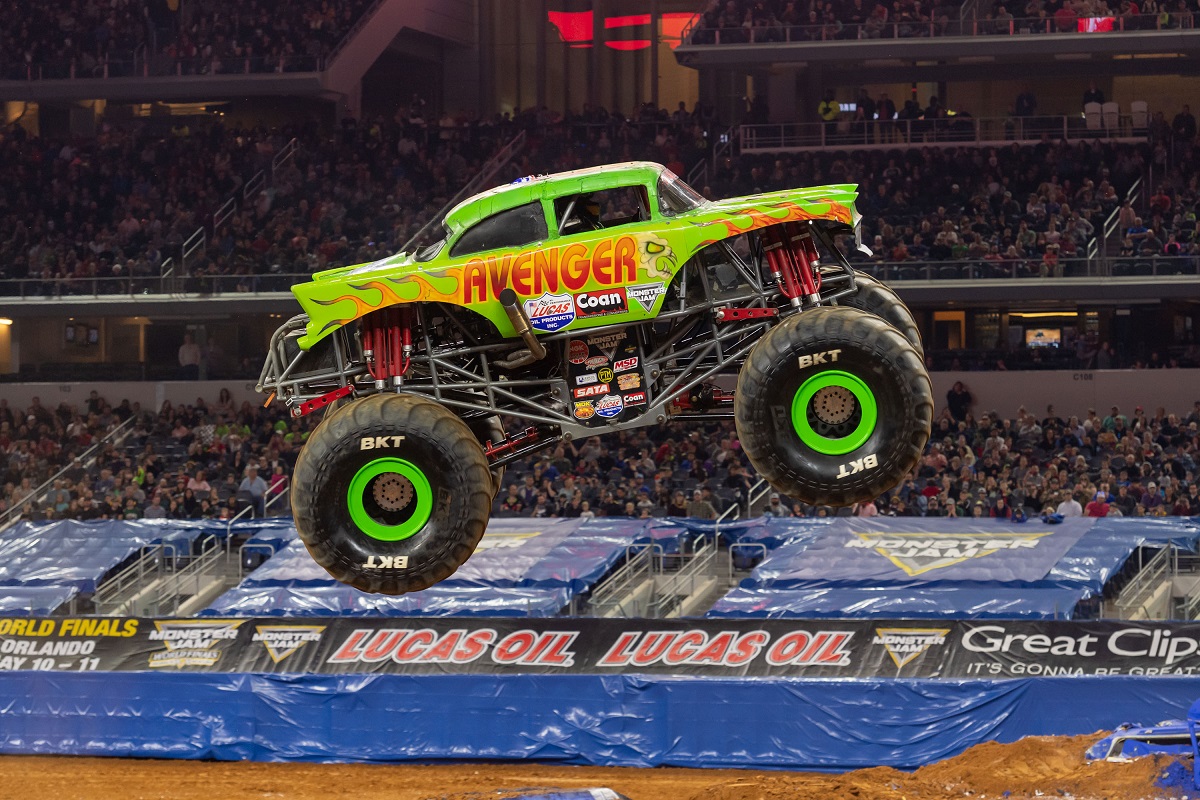
Firefighters battling the Dixie Fire clear Highway 89 after a burned tree fell across the roadway in Plumas County, Calif., on Friday, Aug. 6, 2021. (AP Photo/Noah Berger)
This story was originally published in 2021 and updated on Sept. 1, 2022, with the latest data.
Wednesday’s explosive wildfire, named Border 32, near Dulzura multiplied exponentially in size in just a matter of hours – from 300 acres to more than 4,000. The rate of spread might be heartstopping for some, but a joint NBC investigation of California wildfire data suggests that speed and size are true to an unsettling but undeniable trend – we are now fighting more wildfires, and larger wildfires, each year, than at any point in state history.
Six of the seven largest wildfires ever recorded happened after 2020. Any fire over 100,000 acres is a megafire. Lately, California’s megafires have surpassed or come close to topping a million acres.
Since our investigation initially aired in November 2021, Cal Fire reported eight more wildfires in San Diego County alone. You can watch that story below.
Get top local stories in San Diego delivered to you every morning. >Sign up for NBC San Diego's News Headlines newsletter.
NBC 7 Investigates found California is experiencing vastly larger wildfires now than at any time in recorded history. But could fighting fires actually be making them worse?
Looking at Ann Begley’s house in Alpine now, you’d have no clue the home it replaced burned to the ground four years ago in the West Fire.
Local
“I had to turn the news on,” Begley recalled, getting emotional at the memory. “It was a helpless feeling.”
Begley watched the house catch fire in horror from out of town. Last year, she told NBC 7 her neighbors rescued her then-97-year-old mother as flames reached the back door.
“Everything was reduced down to three feet of ashes,” Begley said. “And that was heartbreaking.”
Begley moved back in after three years of rebuilding. But some things just can’t be replaced.
“I lost this piece of furniture right here,” Begley said, pointing to a black and white photo of an eclectic two-seat wooden dining table.
Not just any table – but a table built by Begley’s father, Jack Rodgers Hopkins, a renowned woodworker and San Diego State University art professor who died 16 years ago.
In all, the family lost 15 pieces of priceless wooden furniture to the wildfire.
“It was like losing him,” Begley said. “It was like losing a piece of him.”
Stories like these are becoming increasingly common.
NBC 7 Investigates teamed up with our stations in Los Angeles and the Bay Area to analyze wildfire data dating back to 1910. Not only is the number of wildfires increasing each year, but we’ve seen more megafires in the last several years than we have in the last century.
California Megafires Are Exploding in Size and Frequency
Acres burned by megafires (100,000+ acres) by decade.
Source: CalFire. Notes: All megafires shown here are from 1932 onward, when reliable records begin, according to CalFire. For 2021 fires, data as of Nov. 2, 2021.
Amy O’Kruk/NBC
“It’s taxing physically,” Cal Fire Captain Frank LoCoco said. “It’s taxing emotionally.”
Six of the seven largest fires in state history occurred after August 2020.
“We attack all fires aggressively,” says LoCoco. “We throw everything we have at it.”
Ironically, that may be the problem, says University of California Riverside geography professor Richard Minnich, Ph. D.
Minnich says by not allowing small fires to slowly put themselves out, large swaths of vegetation grow unchecked, ultimately fueling larger and larger megafires.
But no matter the size, LoCoco says the mission remains the same -- extinguish it as quickly as possible.
Sources: Sources: ESRI, CalFire. Notes: All fires shown here are from 1932 onward, when reliable records begin, according to CalFire. For 2021 fires, data as of Oct 21, 2021.
Amy O’Kruk/NBC
“We need to learn how to work with fire instead of fighting it,” Minnich said. He emphasizes that when wildfires slowly extinguish themselves, the burned vegetation won’t catch fire again for decades.
Minnich has spent decades studying wildfires in Southern California and Mexico. His fire perimeter maps show much fewer and much smaller fires in Baja California - which didn’t start practicing wildfire suppression until 1970.
Across the border, it’s a very different story here in San Diego -- which has been aggressively extinguishing wildfires since 1910.
It’s evidence, says Minnich, that megafires are more likely a result of firefighting - not climate change.
“Global warming is global,” Minnich said. “It should be affecting both countries. And the big fires are on the U.S. side of the border, and not on the Mexican side.”
We asked LoCoco about Minnich’s critique of CalFire’s firefighting approach. His response?
“The population density has increased exponentially,” replied LoCoco. “So in 1920 we’re looking at about 118,000 folks. Today we’re over 3.3 million.”
LoCoco says too many people now live and work near fire danger zones, and because of dry conditions, those fires spread faster than ever before. So he says allowing any wildfire to put itself out would be irresponsible.
“It’s irresponsible to put them out,” retorted Minnich. “The vegetation grows endlessly and it’s not going to go away. They have to accept the fact that this stuff will burn. And we need to ask the question what kind of fire do we want?”
Whatever the solution -- those who’ve lost everything to a wildfire will tell you, what we’re doing now isn’t enough.
“It’s just getting worse,” Begley said. “It’s getting worse. And something’s got to be done.”
While megafires are increasing statewide, San Diego County hasn’t seen a megafire (100,000-plus acres) since the Witch Fire in 2007. Still, Cal Fire says some of the most destructive fires have been among the smallest in acreage. The West Fire that burned down Begley’s home along with 40 other homes in Alpine only reached around 500 acres in size.



